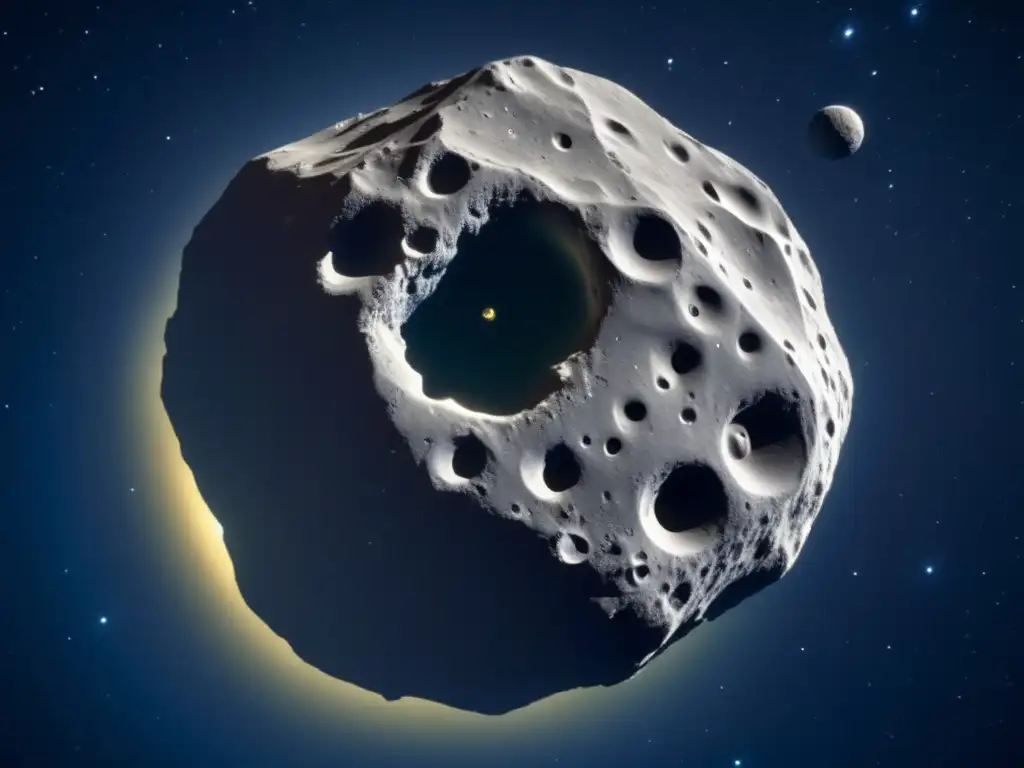Discovering Asteroid Ausonia: An Enigma In Space

Introduction
Welcome to Asteroid Realm, your go-to source for all things related to asteroids. In this article, we will delve into the mysterious world of Asteroid Ausonia. Named after the ancient Roman goddess of grains and harvest, Ausonia is an enigma that continues to captivate astronomers and space enthusiasts alike. Join us on this exploration as we uncover the secrets and significance of this celestial object.
The Discovery of Ausonia

Ausonia’s Classification and Physical Characteristics
Ausonia, first discovered by Italian astronomer Annibale de Gasparis on February 10, 1854, is classified as a main-belt asteroid. It orbits the Sun within the asteroid belt, located between the orbits of Mars and Jupiter. With a diameter of approximately 49 kilometers, Ausonia falls into the category of medium-sized asteroids.
Ausonia’s Orbit and Composition
The orbit of Ausonia is mildly elliptical, with an average distance from the Sun of about 2.68 astronomical units (AU). It takes Ausonia approximately 4.3 Earth years to complete a single orbit. In terms of composition, Ausonia is categorized as a S-type asteroid, which indicates a high concentration of silicate minerals, particularly pyroxene and olivine.
Ausonia’s Surface Features
Although limited information is available regarding the specific surface features of Ausonia, observations suggest the presence of impact craters, ridges, and perhaps even some boulders. Detailed studies and missions are needed to explore Ausonia further and unveil its secrets.
Ausonia’s Significance and Cultural References

Cultural References to Ausonia
Ausonia, being named after the Roman goddess of grains and harvest, holds cultural significance. In ancient Roman mythology, Ausonia was associated with the fertile lands of Italy and was revered as a symbol of abundance and prosperity. The naming of an asteroid after this goddess pays homage to the importance of agriculture in human civilization.
Potential Scientific Value of Ausonia
Studying asteroids like Ausonia provides valuable insights into the early solar system's formation and evolution. Their composition, surface features, and orbital characteristics offer clues about the processes that shaped our celestial neighborhood. Ausonia, with its S-type composition, could provide important data regarding the differentiation and distribution of materials in the asteroid belt.
Future Exploration and Research
While no specific missions have been planned for Ausonia, it remains an intriguing target for future exploration initiatives. Space agencies and researchers are continuously working on projects aimed at studying asteroids up close, potentially shedding light on the mysteries surrounding Ausonia and other celestial objects.
Frequently Asked Questions

-
What is the classification of Asteroid Ausonia?
Asteroid Ausonia is classified as a main-belt asteroid.
-
What is the composition of Ausonia?
Ausonia is categorized as an S-type asteroid, primarily composed of silicate minerals such as pyroxene and olivine.
-
How large is Asteroid Ausonia?
Ausonia has a diameter of approximately 49 kilometers, falling into the medium-sized asteroid category.
-
What is the significance of Ausonia's name?
Ausonia is named after the ancient Roman goddess of grains and harvest, symbolizing abundance and prosperity.
-
Are there any planned missions to explore Ausonia?
Currently, there are no specific missions planned for Ausonia, but it remains a target of interest for future exploration initiatives.
Conclusion
Asteroid Ausonia, with its intriguing classification, composition, and cultural references, continues to be an enigma in space. Unraveling its mysteries will require further research, exploration, and scientific endeavors. By studying asteroids like Ausonia, we gain valuable insights into the formation and evolution of our solar system. As we unlock the secrets of these celestial objects, we come closer to understanding our cosmic neighborhood and our place within it.
We encourage you to share your thoughts and engage with us on Asteroid Realm. Subscribe to our newsletter, share this article on social networks, and stay connected as we explore more fascinating aspects of asteroids. Thank you for joining us on this journey through the captivating world of Ausonia and beyond.
Additional Resources

For further information on asteroids and related topics, please visit the following resources:
- NASA - Asteroids, Comets, and Meteors
- European Space Agency - Asteroids
- International Astronomical Union - Asteroid Press Releases
 Asteroid Bellona: A Tale Of Discovery
Asteroid Bellona: A Tale Of Discovery The Intriguing Nature Of Asteroid Lutetia
The Intriguing Nature Of Asteroid Lutetia Unveiling The Secrets Of Asteroid Pandora
Unveiling The Secrets Of Asteroid PandoraIf you want to discover more articles similar to Discovering Asteroid Ausonia: An Enigma In Space, you can visit the Asteroid Profiles category.
Leave a Reply

Articulos relacionados: